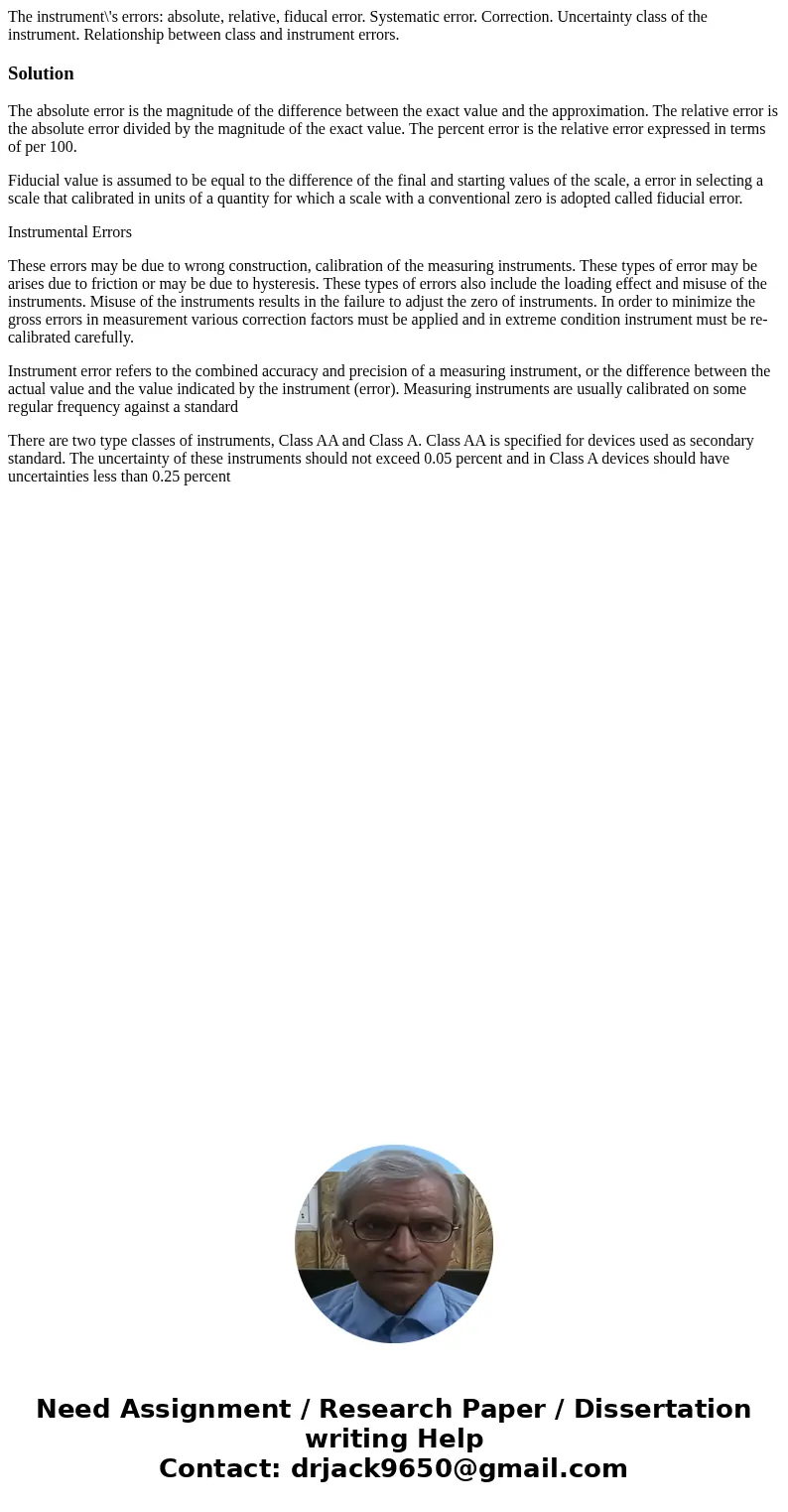The instruments errors absolute relative fiducal error Syste
Solution
The absolute error is the magnitude of the difference between the exact value and the approximation. The relative error is the absolute error divided by the magnitude of the exact value. The percent error is the relative error expressed in terms of per 100.
Fiducial value is assumed to be equal to the difference of the final and starting values of the scale, a error in selecting a scale that calibrated in units of a quantity for which a scale with a conventional zero is adopted called fiducial error.
Instrumental Errors
These errors may be due to wrong construction, calibration of the measuring instruments. These types of error may be arises due to friction or may be due to hysteresis. These types of errors also include the loading effect and misuse of the instruments. Misuse of the instruments results in the failure to adjust the zero of instruments. In order to minimize the gross errors in measurement various correction factors must be applied and in extreme condition instrument must be re-calibrated carefully.
Instrument error refers to the combined accuracy and precision of a measuring instrument, or the difference between the actual value and the value indicated by the instrument (error). Measuring instruments are usually calibrated on some regular frequency against a standard
There are two type classes of instruments, Class AA and Class A. Class AA is specified for devices used as secondary standard. The uncertainty of these instruments should not exceed 0.05 percent and in Class A devices should have uncertainties less than 0.25 percent

 Homework Sourse
Homework Sourse